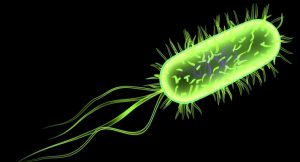What Is A Urinary Tract Infection (UTI)?
UTI is an infection that affects any part of the urinary tract. The urinary tract consists of the kidneys, ureter, bladder and urethra.
What Are The Symptoms Of A UTI?
Not everyone with an UTI has symptoms or signs.
When symptoms occur they may include:
- Urgency to pass urine
- Pain on urinating
- Frequent urination
- Smelly urine
- Blood in the urine
More specific symptoms depend on location of infection:
- Urethra (urethritis) – pain on urinating and in men some may notice a discharge from the penis.
- Bladder (Cystitis) – smelly urine and discomfort in lower abdomen.
- Kidneys (Pyelonephritis) – Back pain, fever and vomiting.
- Testis (Epididymorchitis) – Pain in testis, swelling and redness.
 What Causes The UTI?
What Causes The UTI?
UTIs are most often caused by bacteria. While there are several bacteria that can cause UTIs the most common is called Escherichia Coli (E.Coli).
E.Coli normally and harmlessly inhabits the female external genitals and anus. Given correct circumstances the bacteria move up the urethra and infect various urinary organs.
Who Gets UTI?
Women are more likely to get UTIs compared to men. 1 in 5 women have a UTI at some point in their life. The reasons why women are more prone to UTI are:
- The urethral opening is close to vagina and anus.
- The female urethra is only 4cm long allowing bacteria to access the bladder more easily.
- Sexual intercourse makes it easier for bacteria to become attached to the urethra.
High Risk Groups
Certain populations are at higher risk of UTIs. They include:
- People with structural abnormalities of the urinary tract.
- People with certain medical conditions that can supress the immune system such as diabetes or medications that supress the immune system.
- Elderly women. The lower levels of estrogen after menopause makes the tissues of the vagina, urethra and bladder more vulnerable to infection.
- Obstruction to urine flow. Examples include men with an enlarged prostate or a stone in the ureter. In such cases the stagnation of urine encourages bacteria to grow.
Diagnosis Of UTI
Diagnosis of UTI requires taking a detailed history of the symptoms and establishing the frequency and chronology of the symptoms.
Tests are needed and include:
- Mid Stream Urine (MSU) – Culturing a sample of your urine in a lab to check for bacterial growth.

- Ultrasound of the urinary tract to check for any abnormalities of the urinary system such as stones or growths.
- Cystoscopy – this may be needed to assess the urethra and bladder.
To find out more about Flexible Cystoscopy (Male) Click Here
To find out more about Flexible Cystoscopy (Female) Click Here
Ways To Reduce The Risk Of UTI
A number of everyday measures may help in lessening the frequency and chance of getting a UTI. They include:
- Drinking plenty of water.
- Cranberry juice may prevent UTIs. But do not take cranberry if you are also taking the blood thinning medication warfarin.
- Vitamin C. This makes the urine more acidic which stops growth of bacteria.
- Urinate after sexual intercourse to flush any bacteria out.
- Stop smoking. Smoking causes bladder cancer which is a source of recurrent UTIs.
Treatment Of UTI
Treatment of UTIs depend on the severity.
Simple UTI
Antibiotics are required to treat UTIs. With increasing use of antibiotics, a number of the bacteria that cause UTIs exhibit resistance to the commonly used antibiotics. It will take 24 to 48 hours after the MSU is done for the doctor to advise the correct antibiotic to which the bacteria will respond. While you are waiting for the result to come it is common to start a broad spectrum antibiotic. This may need to be changed once the results from the MSU are back.
Recurrent UTI
Any underlying cause for the recurrent UTI needs to be treated appropriately. If none is found then a prolonged course of low dose antibiotic may be needed.
Severe UTI
Admission to a hospital for intravenous antibiotics may be needed.
Obstructed Kidney with secondary UTI
This is a urological emergency and requires immediate unobstruction of the kidney by inserting a JJ stent. After the stent is inserted intravenous antibiotics are given.
To find out more about Stent Insertion Click Here.

